The Pirc Defense is one of the most popular openings in chess.
This opening leads to positions that can take different shapes – could be quiet and calm, complex or even head-on aggressive.
In the Pirc Defense, Black relinquishes the centre to White in the opening to allow for counterplay during the middlegame.
In other words, Black is telling White “Control the centre with your pawns, achieve a fearsome pawn structure while I develop my pieces from the sidelines. Once I’m done putting my king to safety, my main strategy will revolve around destroying that centre control you’ve built“
This opening was founded by Yugoslavian (now called Slovenia) GM Vasja Pirc.
It’s characterized by the opening moves 1. e4 d6 2. d4 Nf6 3. Nc3 g6
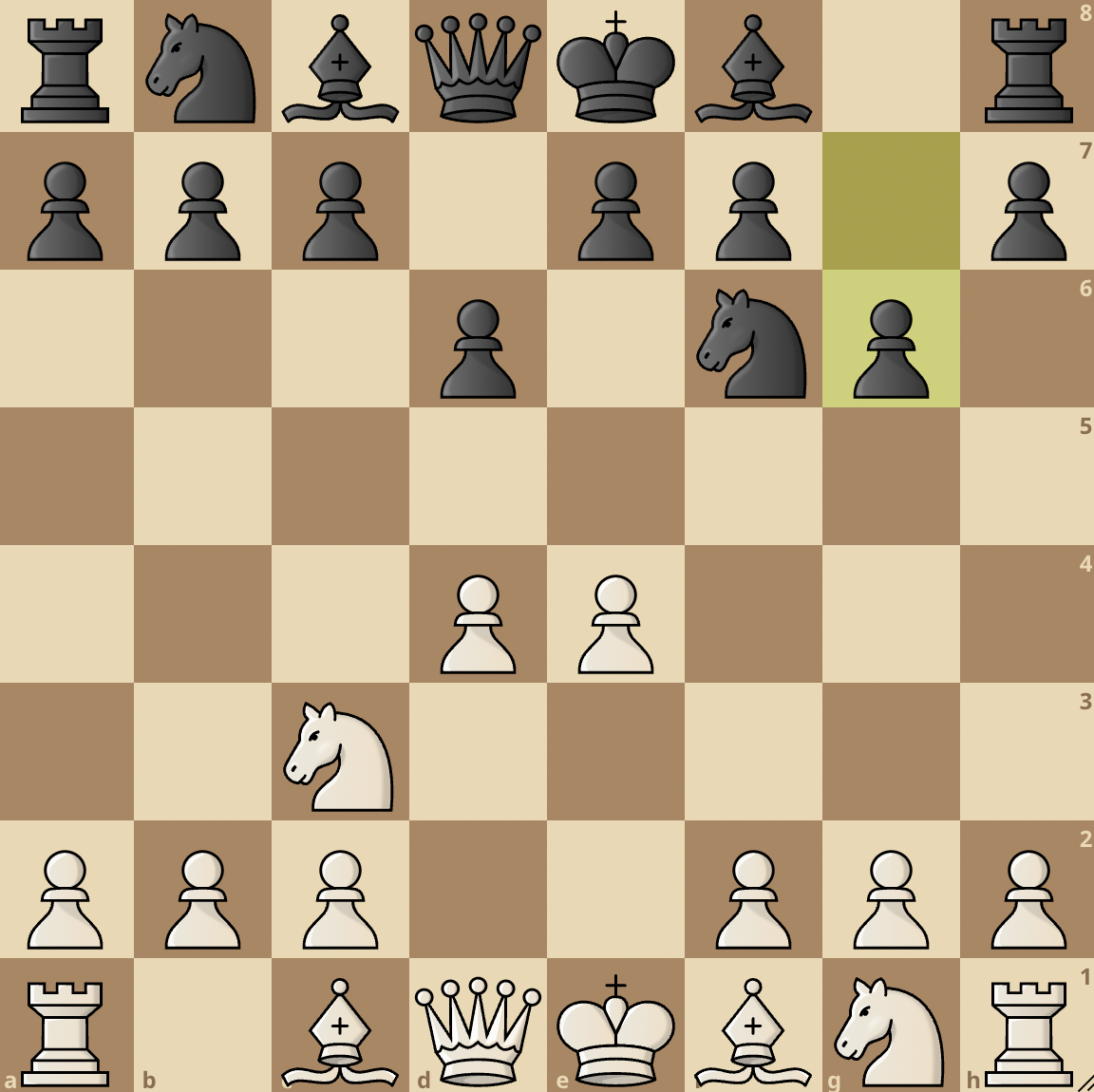
We see that Black allows White to build a robust pawn centre with d4 and e4, choosing to focus on fianchettoing the dark-squared bishop which will be instrumental in placing pressure against the a1-h8 diagonal.
At the right moments, Black will strike back with moves like …c5, …e5, …c6 and …b5 to play …b4 etc. At that point, White has to relinquish control or strike back and maintain the initiative.
Altogether, this leads to very sharp and aggressive positions. You might be totally outplayed if you don’t know the correct replies to plans made either by White or Black.
That said, let’s get into the variations and look at these concepts extensively.
Classical Variation
1. e4 d6 2. d4 Nf6 3. Nc3 g6 4. Nf3

This variation is what we just discussed earlier. Some people like to think that 1. e4 d6 already starts the Pirc defense.
So if that’s the case, the above variation can be regarded as a main line (aka classical variation). That’s because many of our soon-to-be-discussed lines take their roots from here.
Modern Defense, Geller System
1. e4 d6 2. Nf3
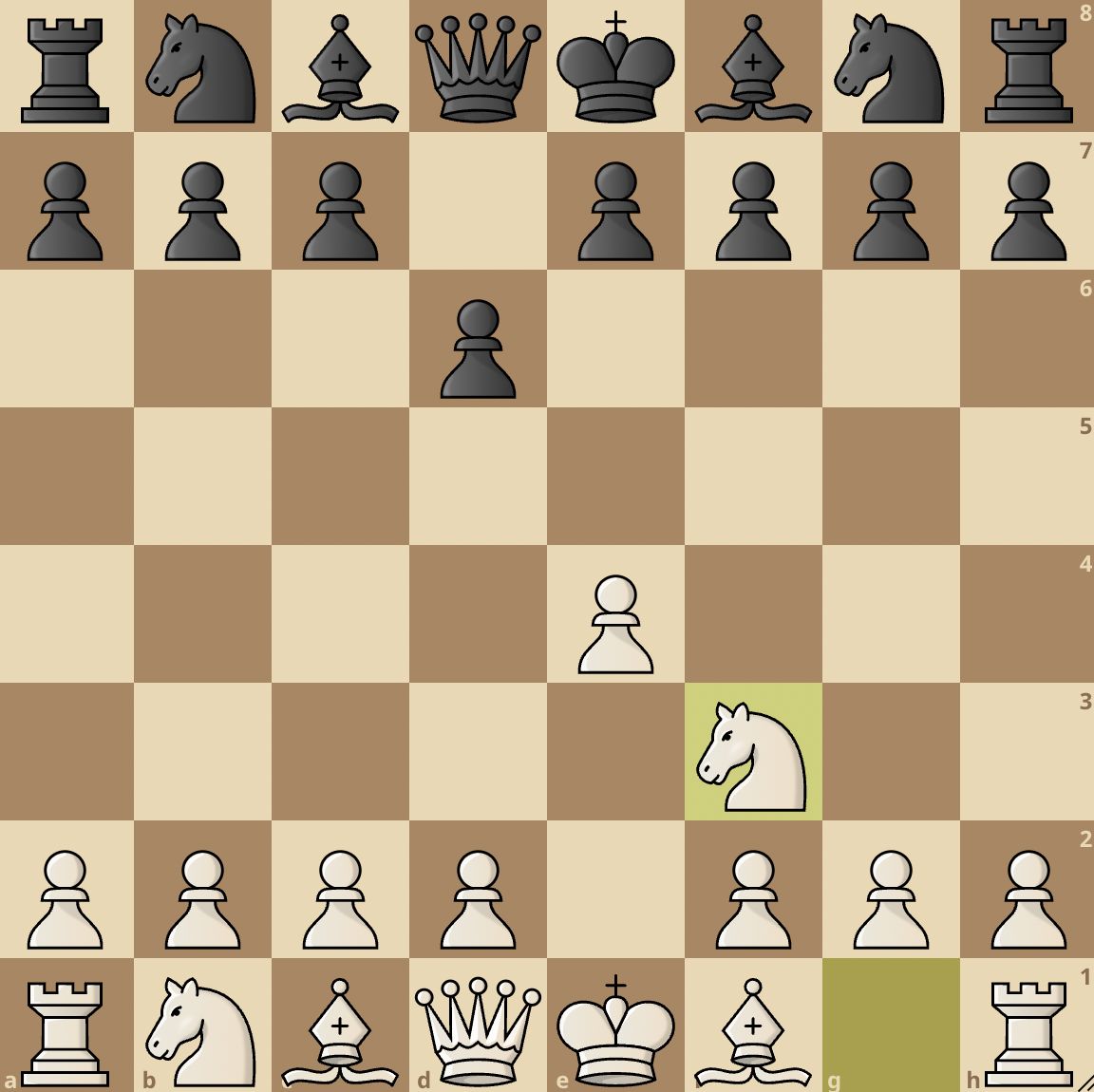
In the Modern Defense, White’s idea is flexibility. This can be important when you don’t want to fall into your opponent’s opening preparation.
With 2. Nf3, White has a myriad of choices to tranpose to, depending on the responses given by Black.
White could transpose to Philidor’s defense after 2…e5 3. d4. After 2…c5 3. d4, we have the Sicilian defense.
White could also choose to go ahead with the classical variation.
In all, 2. Nf3 gives White that much needed flexibility.
Austrian Attack
1. e4 d6 2. d4 Nf6 3. Nc3 g6 4. f4
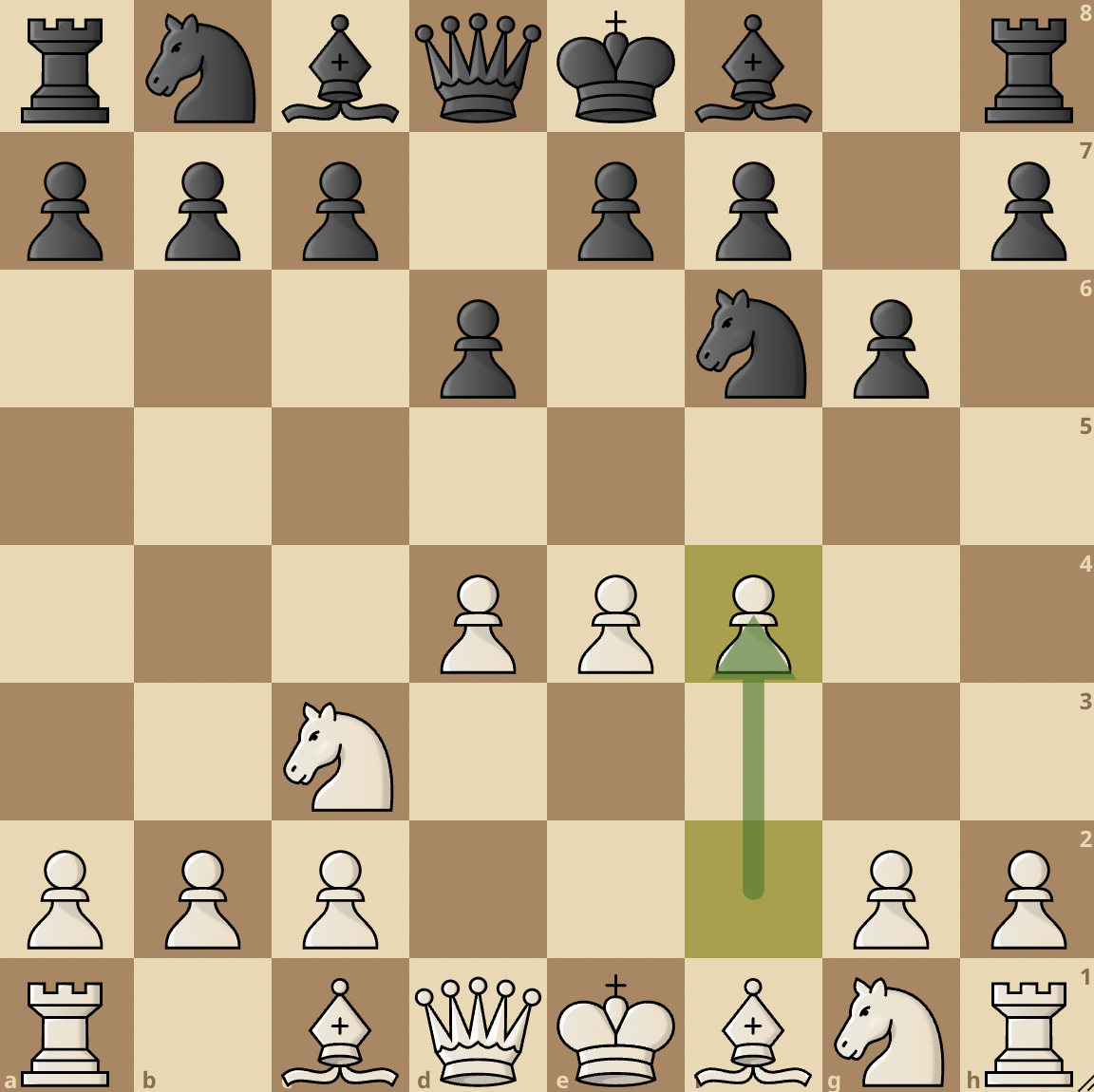
The Austrian Attack is a major variation of the Pirc Defense.
It’s characterized by the aggressive 4. f4 move as a continuation to the opening main lines ending with 3…g6
In this opening, White is basically making his intentions of building a massive pawn centre known, with ideas of attacking either in the middle of the board or on the kingside.
Generally, this variation appears to be more advantageous for White. It was a favourite of American Legend Robert Fischer.
The f2-f4 advancement gives White more control of the centre. The f4 pawn claims the e5 and g5 squares which could lead to an attack through the centre or a kingside attack.
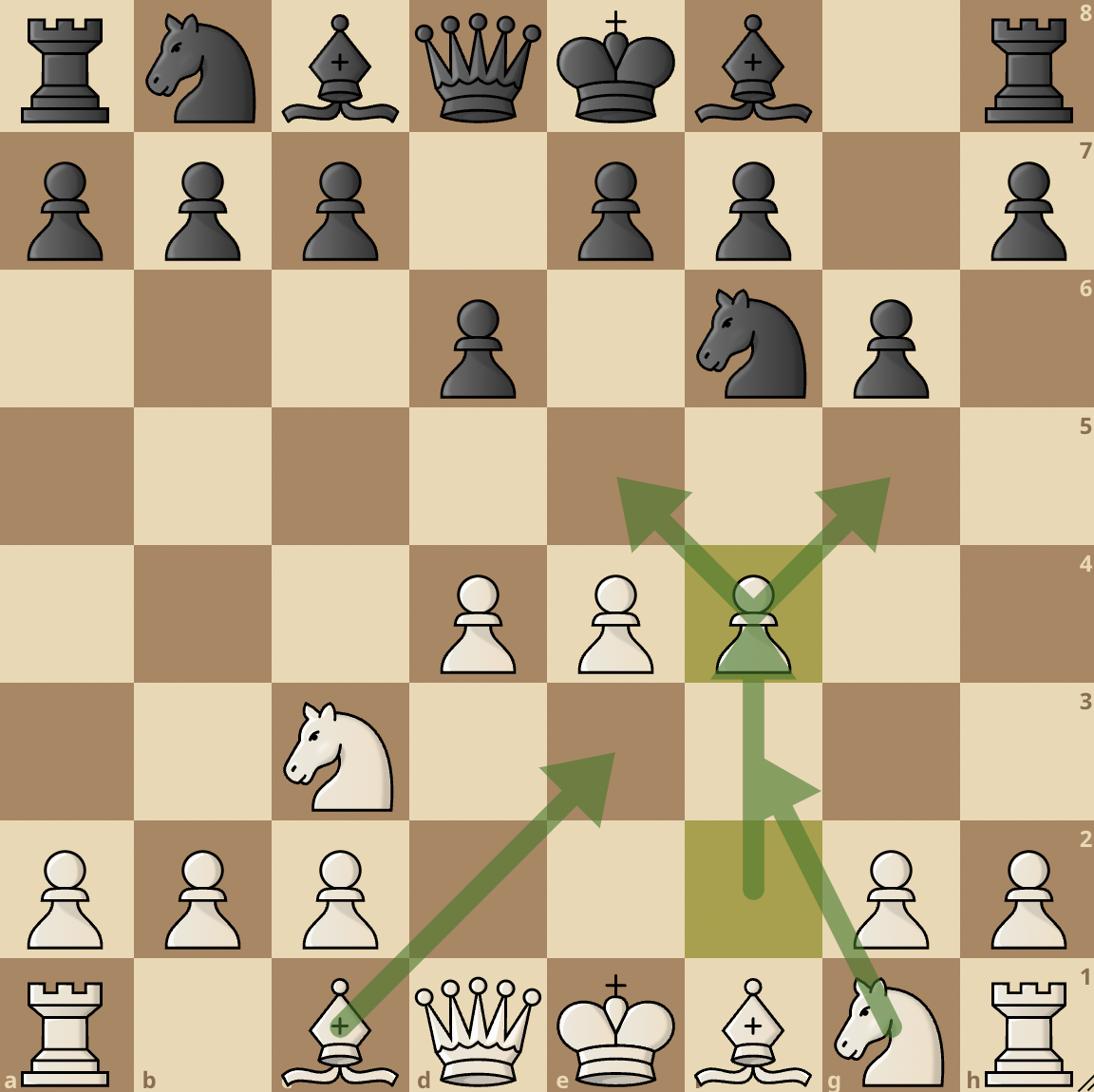
White’s possible plans in this opening include playing Nf3, Be3, e5, Bc4 etc. Black must be careful so as not to get overwhelmed by the onslaught of the White pieces.
Like highlighted earlier, Black can strike back in this opening by playing moves like …c5
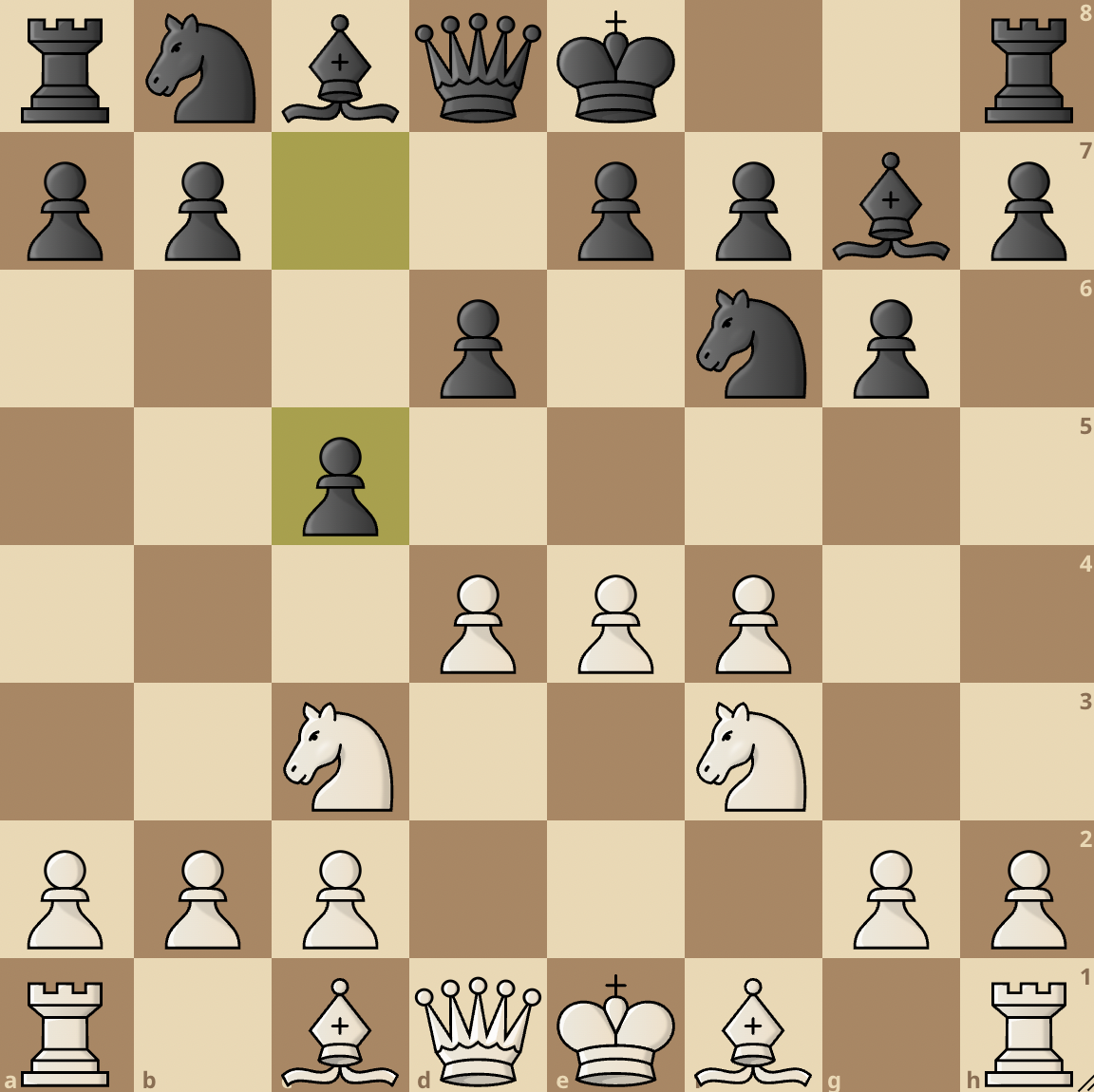
With 5…c5, Black immediately counters White’s centre with plans of breaking it up. If White plays 6. dxc5, Black has 6…Qa5 pinning the knight on c3 and threatening Nxe4.
At this point, Black has a relatively easy game.
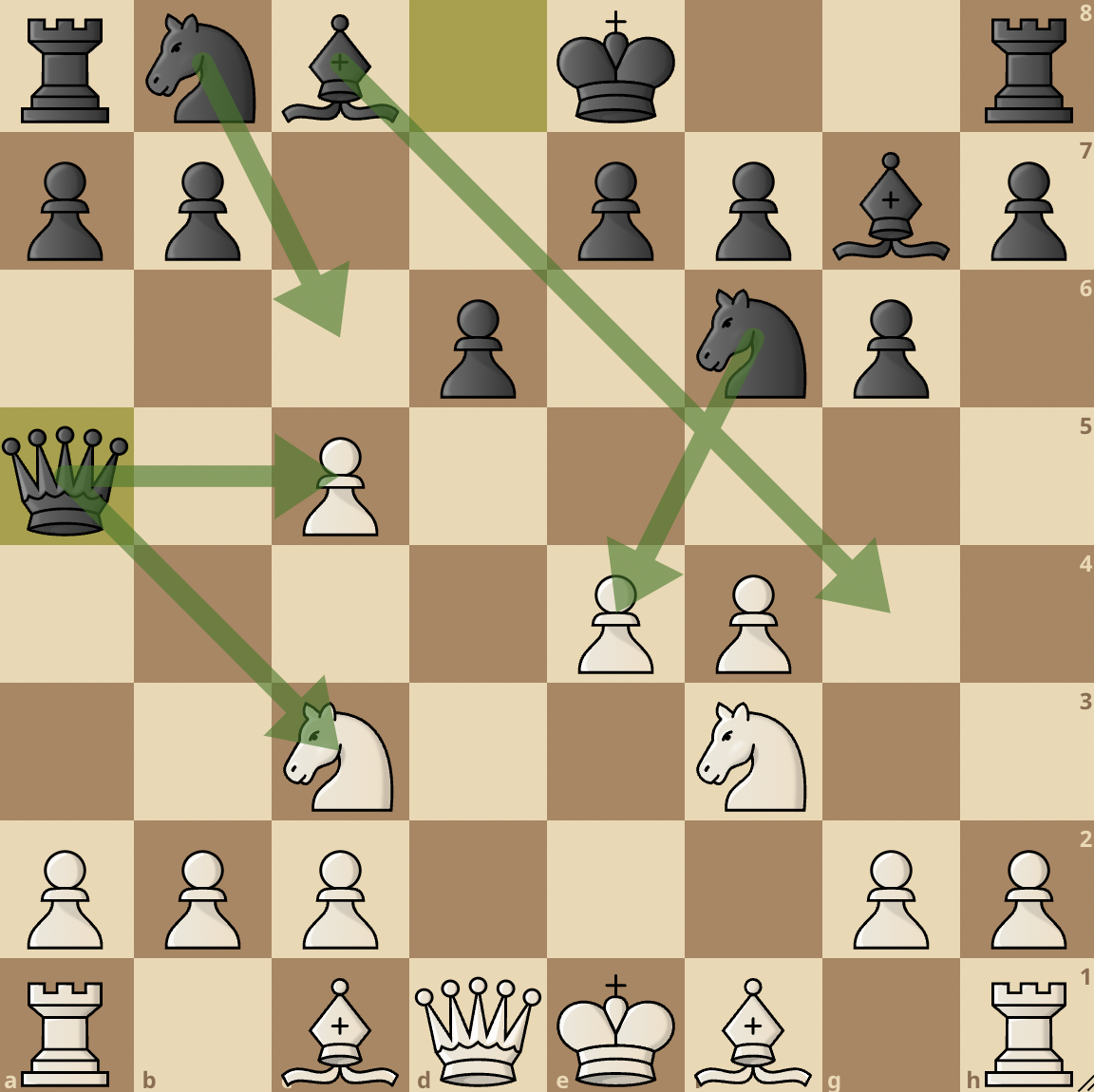
So, White might better off playing 6. d5 keeping the advanced pawn centre intact. However, Black can play 6…O-O 7. Bd3 e6 8. dxe6 fxe6 with good piece play and a roughly equal position.

This particular variation would excellently suit players that enjoy open games and enjoy being creative with their attack.
Weiss Variation
This is a variation that can be transposed to from the Austrian attack of the Pirc defense.
Following the Austrian attack with 4. f4, Black’s usual response is 4… Bg7, a move that continues with development regardless of White’s hold on the central and kingside squares.
After 5. Nf3 and a kingside castle for Black, a bishop development through 6. Bd3 gives the Weiss variation of the Austrian attack.
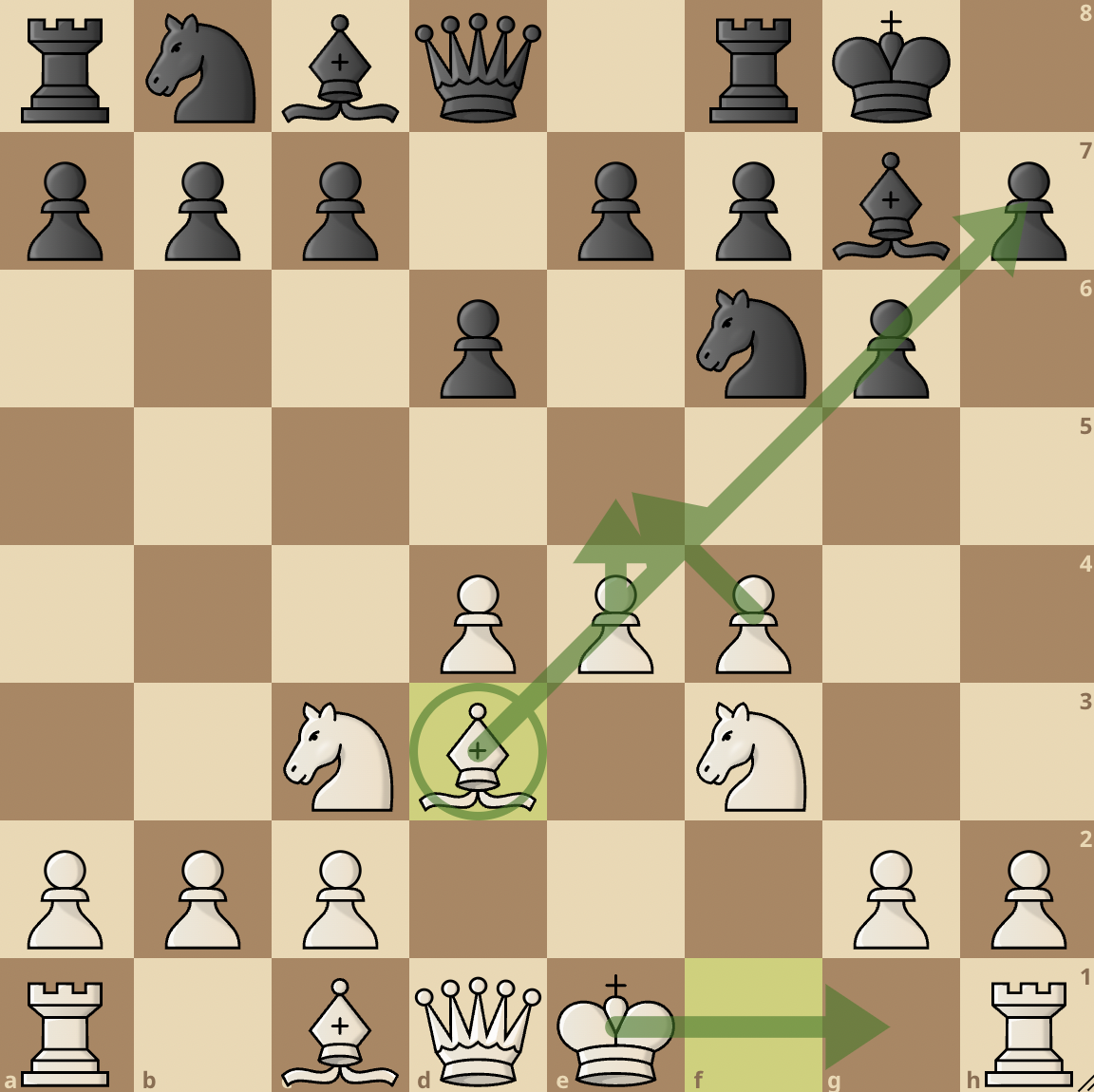
The developed bishop poses a long-term threat on the b1-h7 diagonal, following the advancement of the e- pawn.
This pawn would most likely, be captured by the f4 pawn, creating even more attacking opportunities against Black on the f- file after a kingside castle for White.
The 150 Attack
This variation called 150 attack is also one to consider when playing as White against the Pirc defense.
Players of intermediate strength should consider playing the 150 attack because it takes advantage of Black’s minor kingside weaknesses by applying pressure on the g7 fianchettoed bishop to further weaken the h6 and g7 squares.

Playing Nf3 instead of f4 like the Austrian attack variation amplifies the kingside attack following the Be3-Qd2 battery to execute the kingside attack.
Black’s plan here revolves around attacking White on the queenside since the king usually castles there after the Be3-Qd2 setup. Black can achieve counterplay by playing …c6, …b5 to play …b4 pushing away the knight on c3 leaving the pawn on e4 hanging.
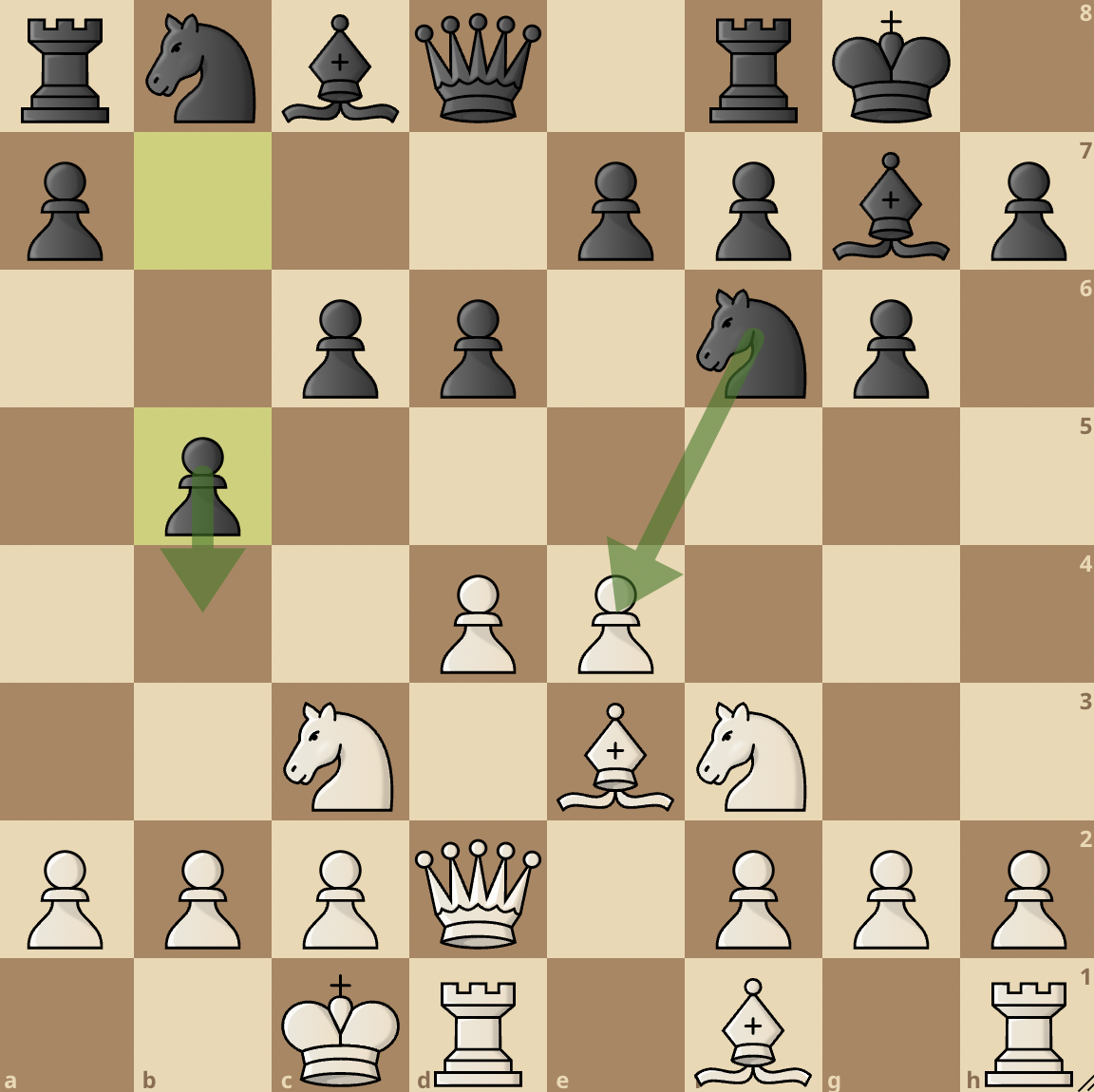
Usually, White plays a move like e5 to use his more developed pieces advantage to break through in the centre or kingside while slowing down Black’s attack.
After capture, Black can continue with …Qa5 with ideas of …b4, …Nd5, …Be6 etc.
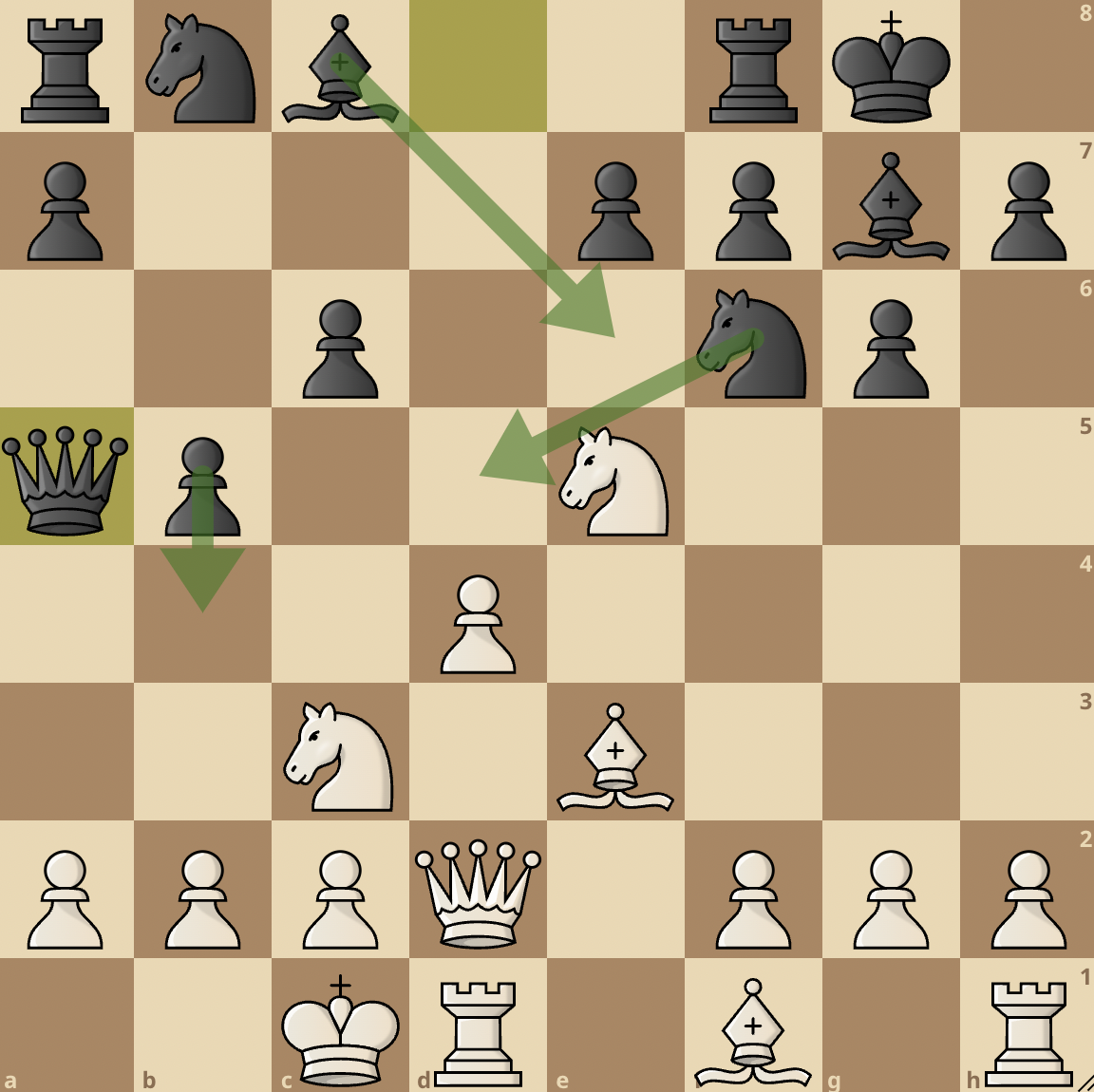
White must be careful not to be overrun by Black’s seemingly overactive pieces and play solidly. Altogether, this variation leads to really sharp positions.
The Argentine Attack
This is another variation for White to consider when playing against the Pirc defense.
Compared to the 150 attack, the Argentine attack is said to be more passive by playing f2-f3 setup to prevent Black from playing the malicious Ng4.

White’s plan is to castle long (queenside), play g4 and h4 to try to weaken Black’s kingside and break in there.
Meanwhile, Black’s plan is to counterattack on the queenside just like the 150 Attack.
Two Knights/Classical system
It is playing 4. Nf3 as a continuation for the Pirc defense.
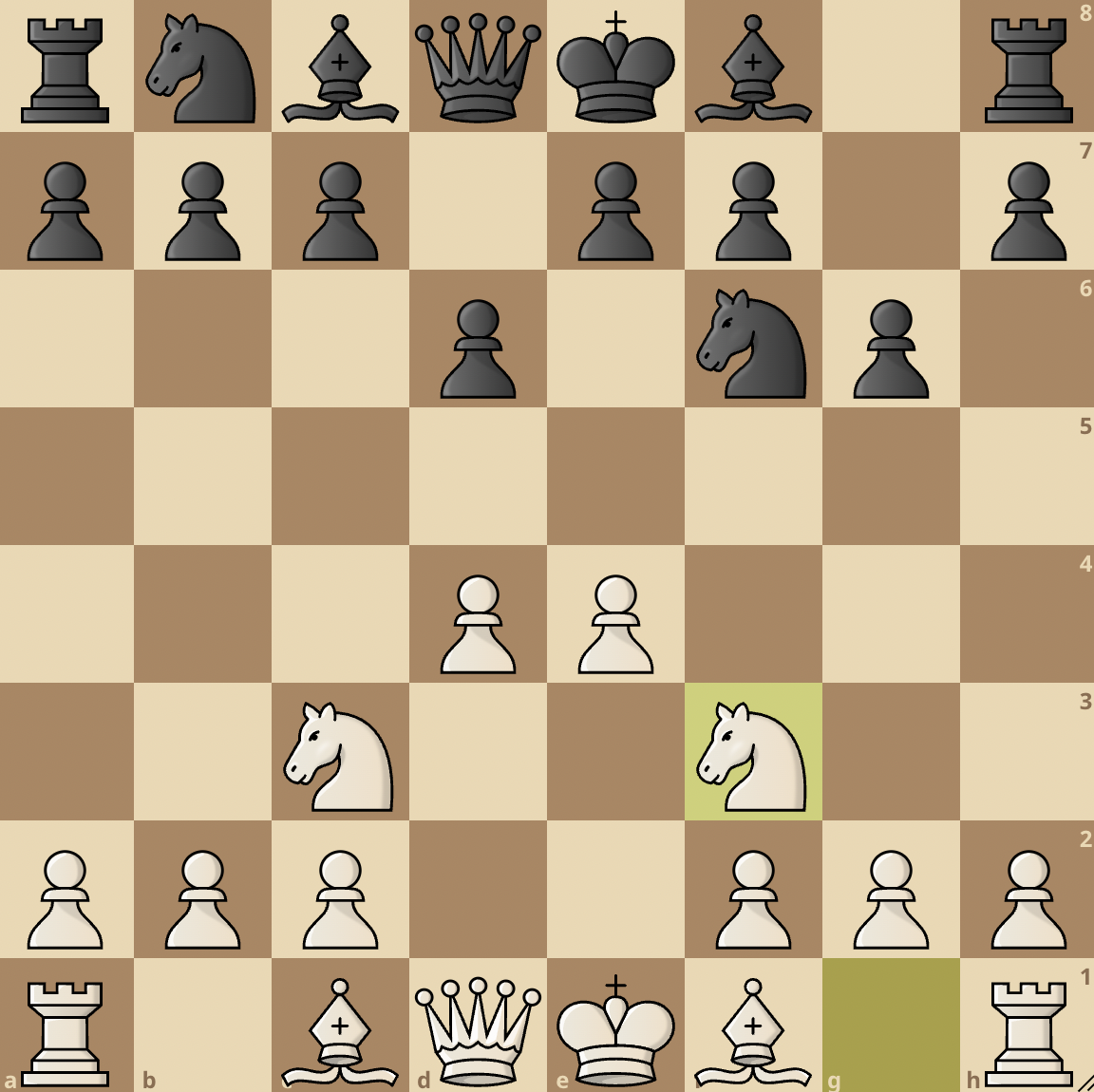
This system can lead to the 150 attack for a more aggressive approach, compared to the Argentine attack with 4. f3.
After 4… Bg7 5.Be2 0-0 6. 0-0, Black is forced to either play passively to White’s initiative or go for a gambit through 6… e5.
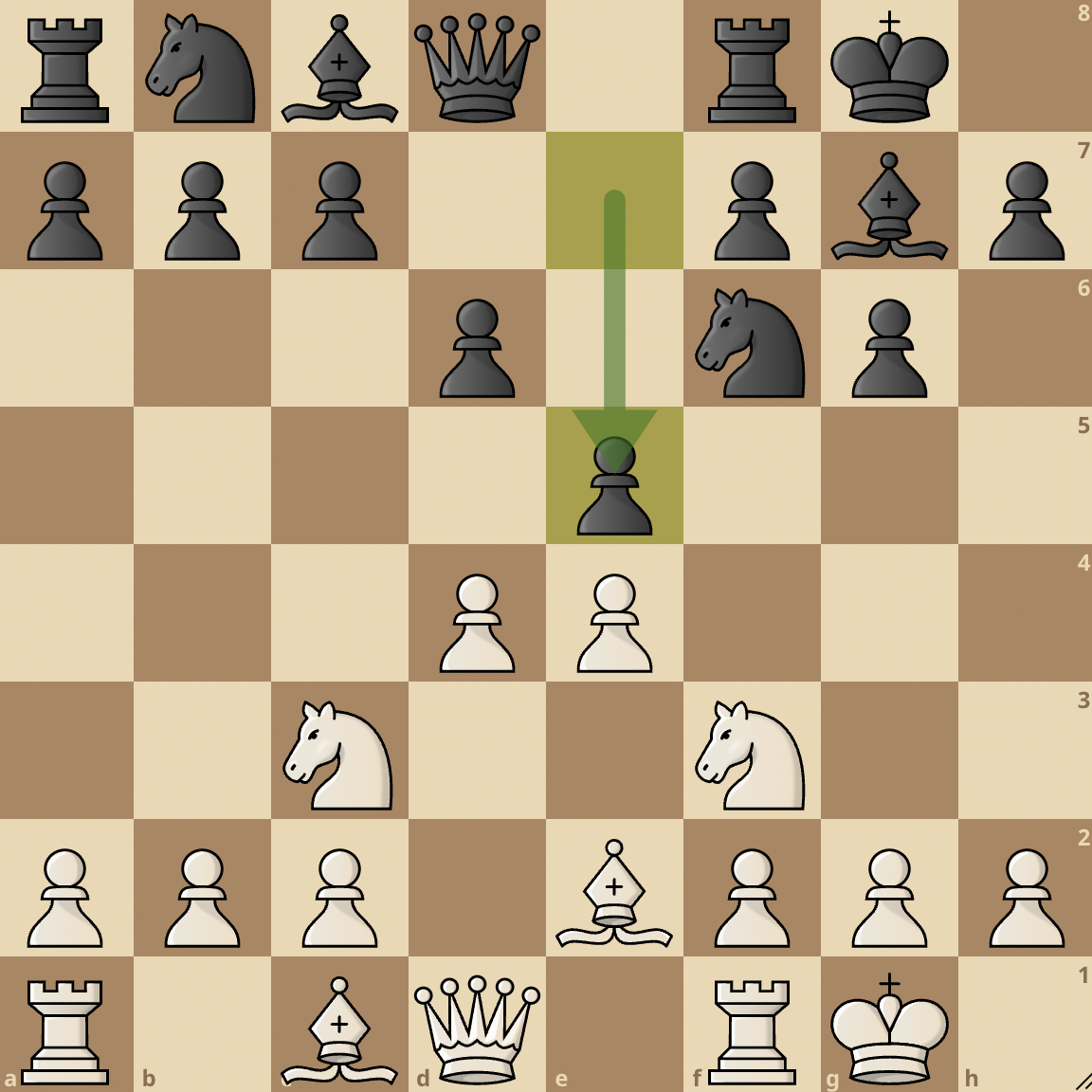
Well, it’s not exactly a gambit as after 7. dxe5 dxe5 8. Nxe5,
Black can immediately play 8. Nxe5! revealing a discovered attack on the White knight on e5

The resulting position after 9. Nxe4 Qxd1 10. Rxd1 Bxe5 is just equal.
Similarly, the Classical system variation of the Pirc defense can transpose to the Dragon variation of the Sicilian defense via the following sequence of moves; 6…c5 7.Be3 cxd4 8. Nxd4.
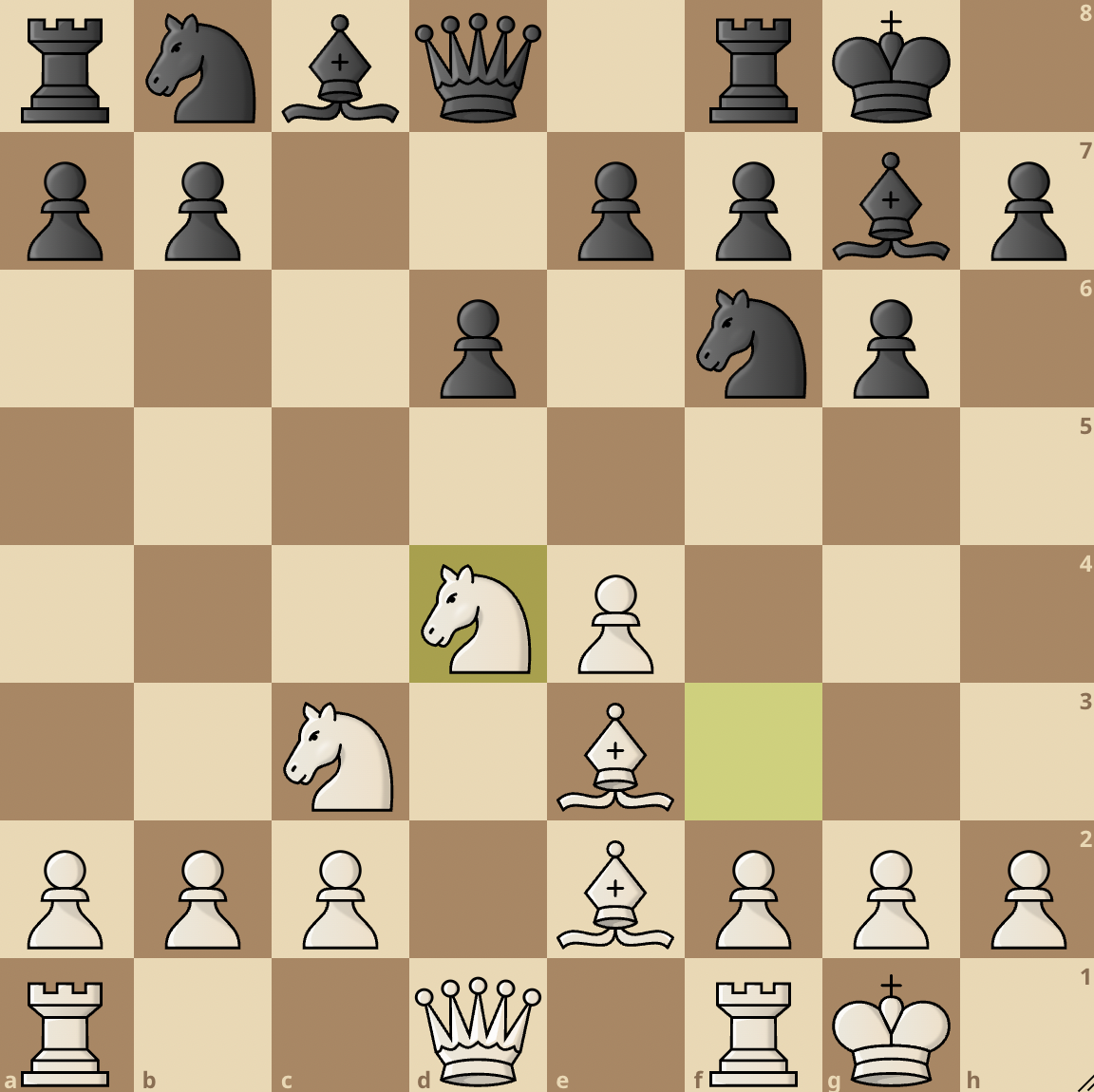
From this position, Black has to continue development with 8…Nc6. A rash move like 8…e5? hitting at the knight on d4 leads to the loss of a pawn after 9. Ndb5.
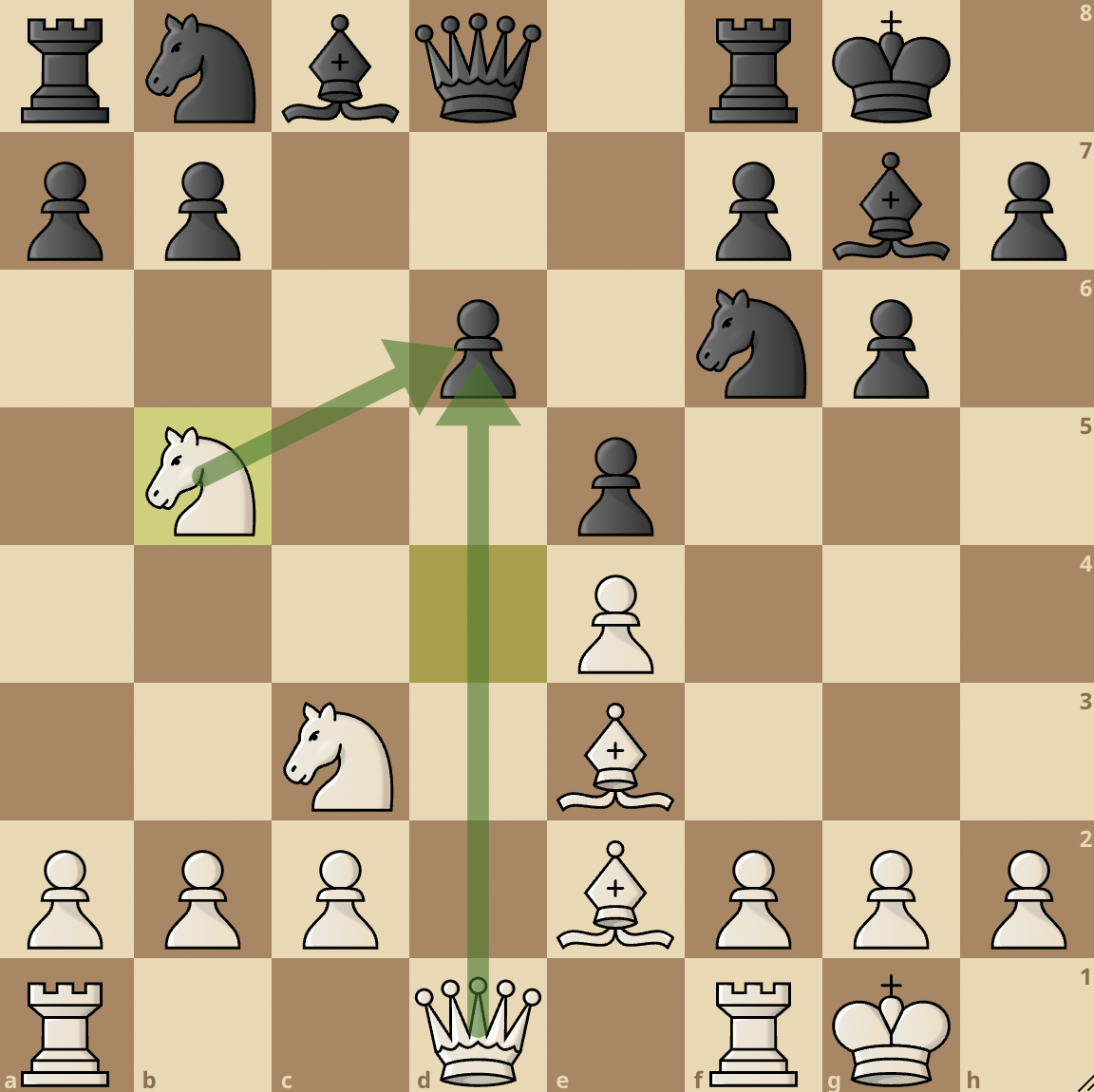
9. Ndb5 immediately attacks Black’s backward pawn on d6 and it falls in the next move.
Byrne Variation
Robert Byrne invented this variation in the 60s.
After the main Pirc defense line, the Byrne variation is executed by playing 4. Bg5.
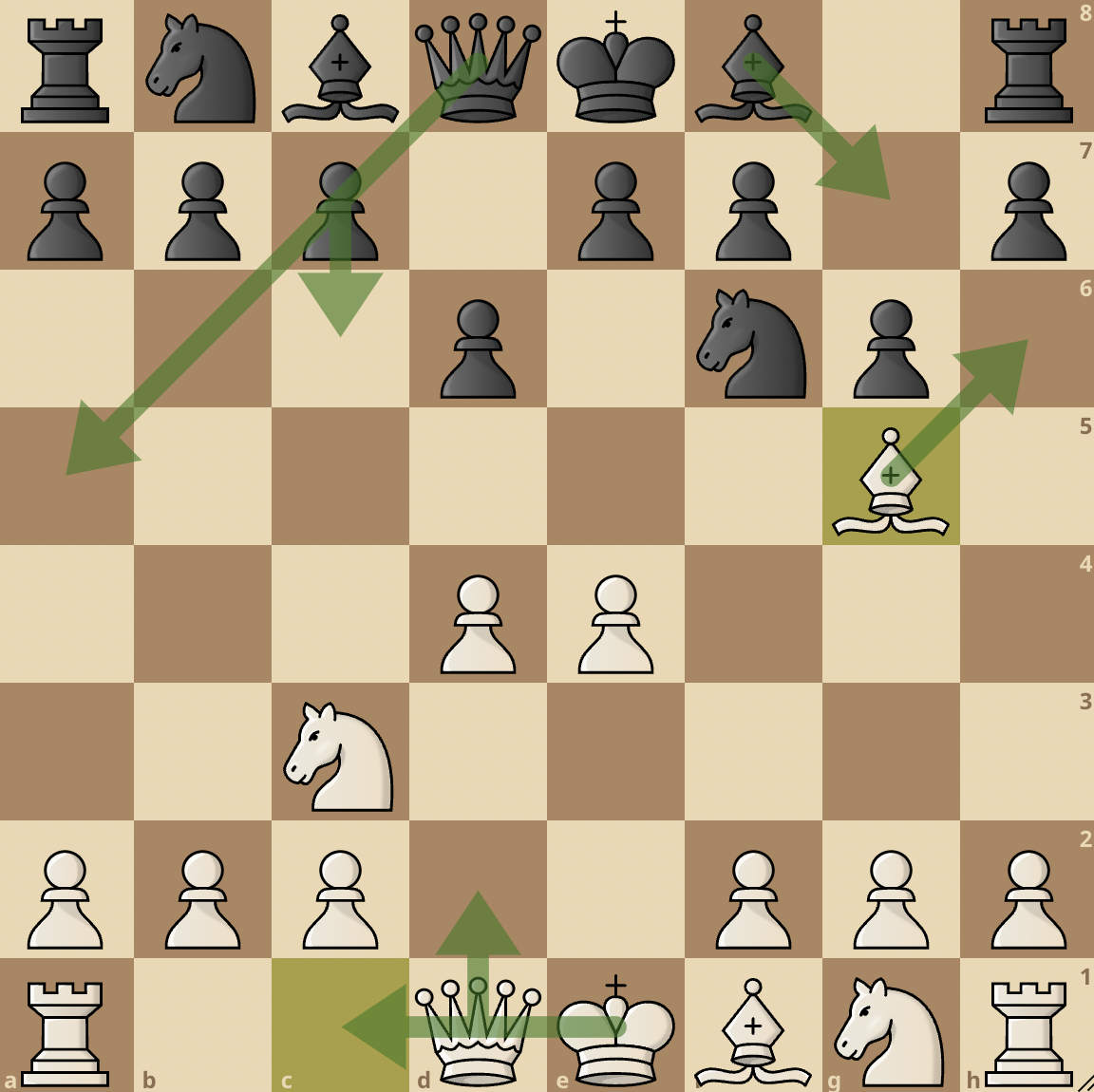
This Bg5 move forces Black to keep the e- pawn stationed where it is to avoid a pin to the queen. Black’s h- pawn is tempted to play h7-h6 which is a move that might create weak squares and further expose the kingside as the game progresses.
On the other hand, Black can reply to this minor exchange threat by playing a flexible c6 which allows the Black queen a route from d8 to a5 where it can start creating problems for White’s king.
White’s reason for playing 4. Bg5 could be to follow it up with Qd2, creating a bishop-queen battery to attack the c1-h6 diagonal when Bh6 comes in.
Playing the 4…Bg7 book move immediately might not be the best choice as White can confidently assume his setup.
This is why 4…c6 is a better flexible move. With this move, Black can choose to delay kingside castling and instead attack White on the queenside with …Qa5, …b5 etc.
The Byrne variation can also play out on move 5 with 4. Nf3 Bg7 5. Bg5.
Lion’s Jaw Variation
This variation of the Pirc defense is attained on move 3. White’s opts for 3. f3 to protect the e- pawn being threatened by Black’s f6 knight, instead of the traditional 3. Nc3.
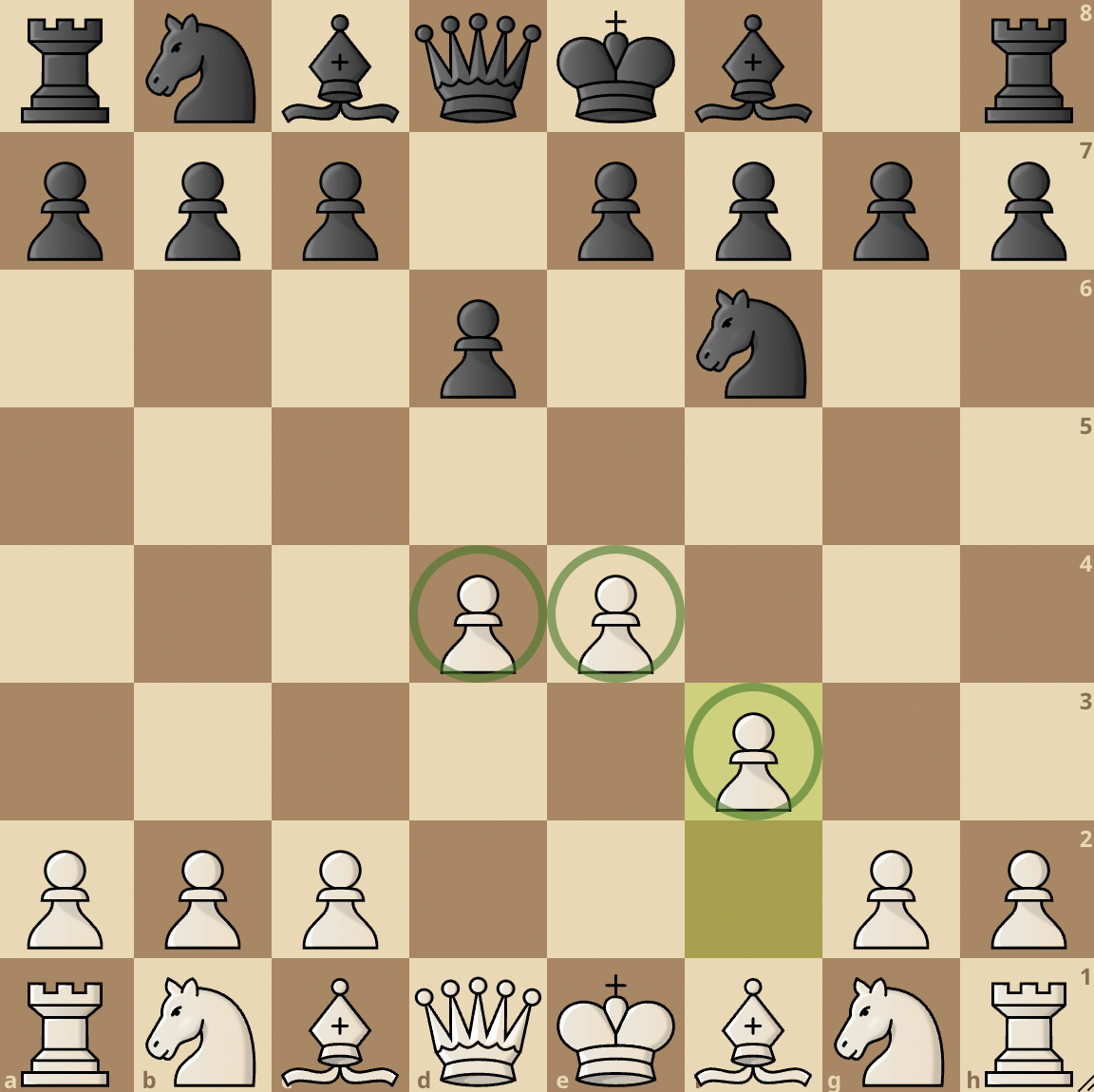
A lion’s jaw has a host of sharp strong teeth ready to crush whatever comes within its grasp. This position above presents a corresponding illustration on the kingside as White strengthens the squares on the area to prevent unexpected attacks from Black’s f6 knight and c8 bishop.
Generally, the Pirc defense appears to relinquish the centre early on and focuses on counterattacks. In the lion’s jaw variation, White can be said to be quite timid in his approach which could be to Black’s advantage if Black plays for the centre with e7-e5.
Other notable variations include;
Bayonet Attack
Emerges on move 5 with 5. h4
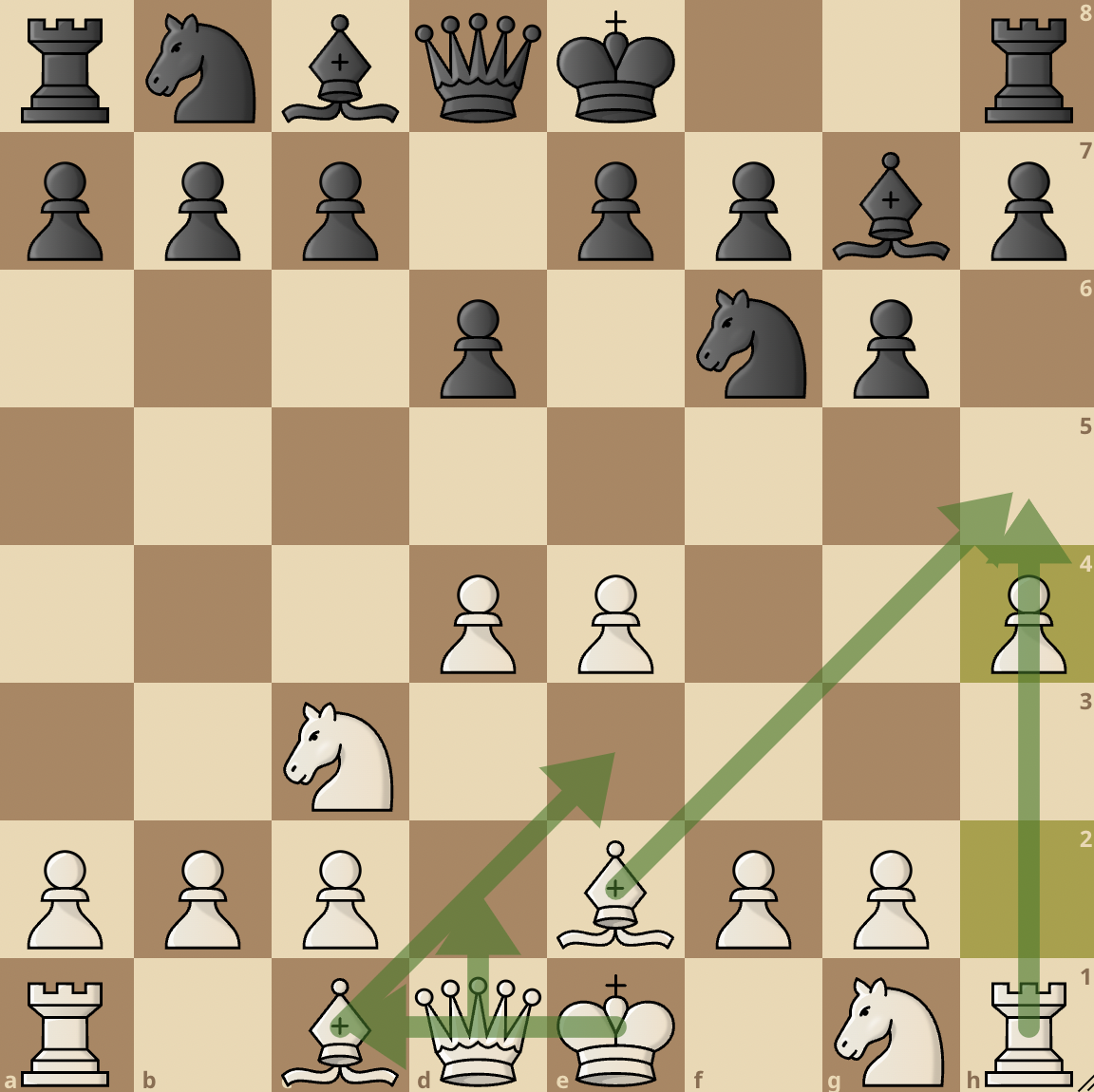
The plan is simple – to go for an early kingside attack with all White’s pieces ready for action.
Chinese Variation
It also emerges on move 5 with 5. g4
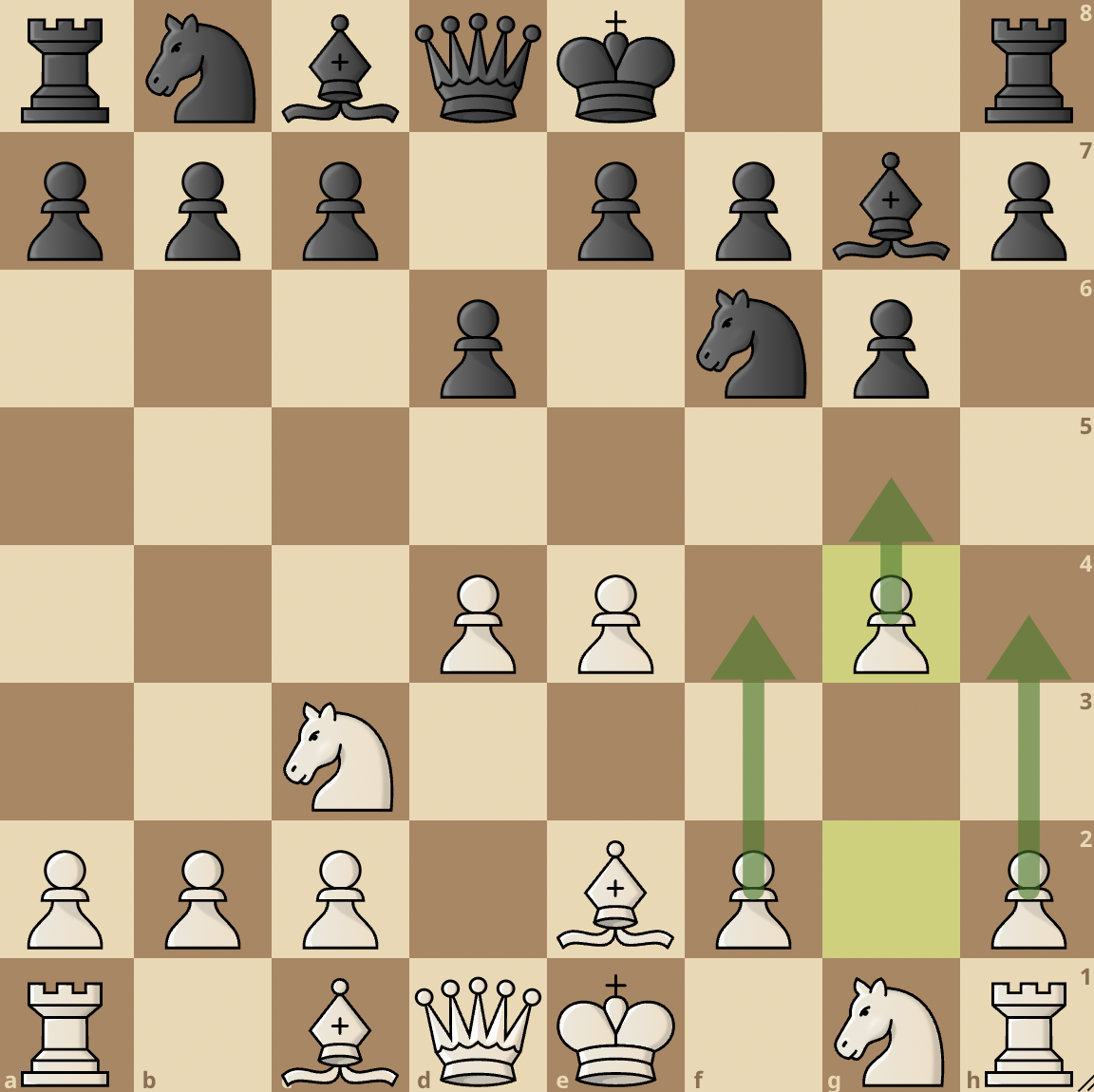
The idea is similar to that of the Bayonet Attack.
Czech Defense
By continuing the mainline, one plays the Czech defense or Pribyl System with 3…c6.
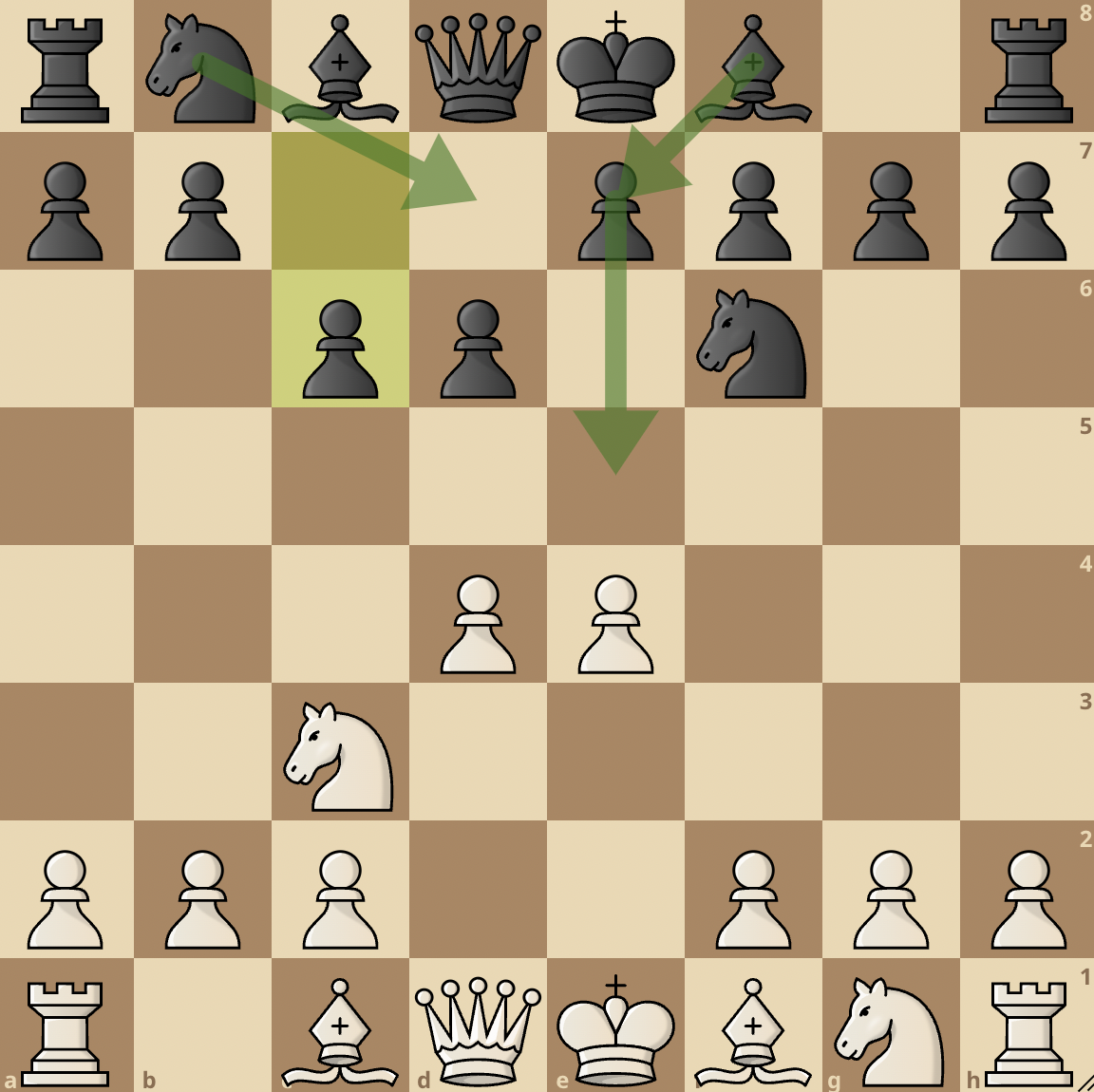
The point of this variation is flexibility as we’ve seen in previous sections.
Successful deployments
The Pirc defense has been successfully deployed in the following games:
1. Mikhail Tal Vs Tigran Petrosian Moscow 1974
The Magician from Riga saw out the Iron Tiger in this 23-move game. Regardless of his firm defensive abilities, Petrosian could not help but succumb to the pressure of Tal’s brilliance against the Pirc defense.
Touch the moves or move the board around for a better interactive experience.
2. Anatoly Karpov Vs Zurab Azmaiparashvili Moscow 1983
It’s always a difficult task to play against a reigning World Champion but to win? USING BLACK??
That’s simply astonishing, and as much as we ought to give maximum credit to Zurab Azmaiparashvili for this brilliant feat. We must also acknowledge the opening repertoire he employed which is the Pirc defense.
3. Bobby Fischer Vs Viktor Korchnoi Curacao 1962
In a fine display from one of the strongest players to have never become World Champion, we see the Pirc defense deployed beautifully to win a game against the creative legend, Fischer.
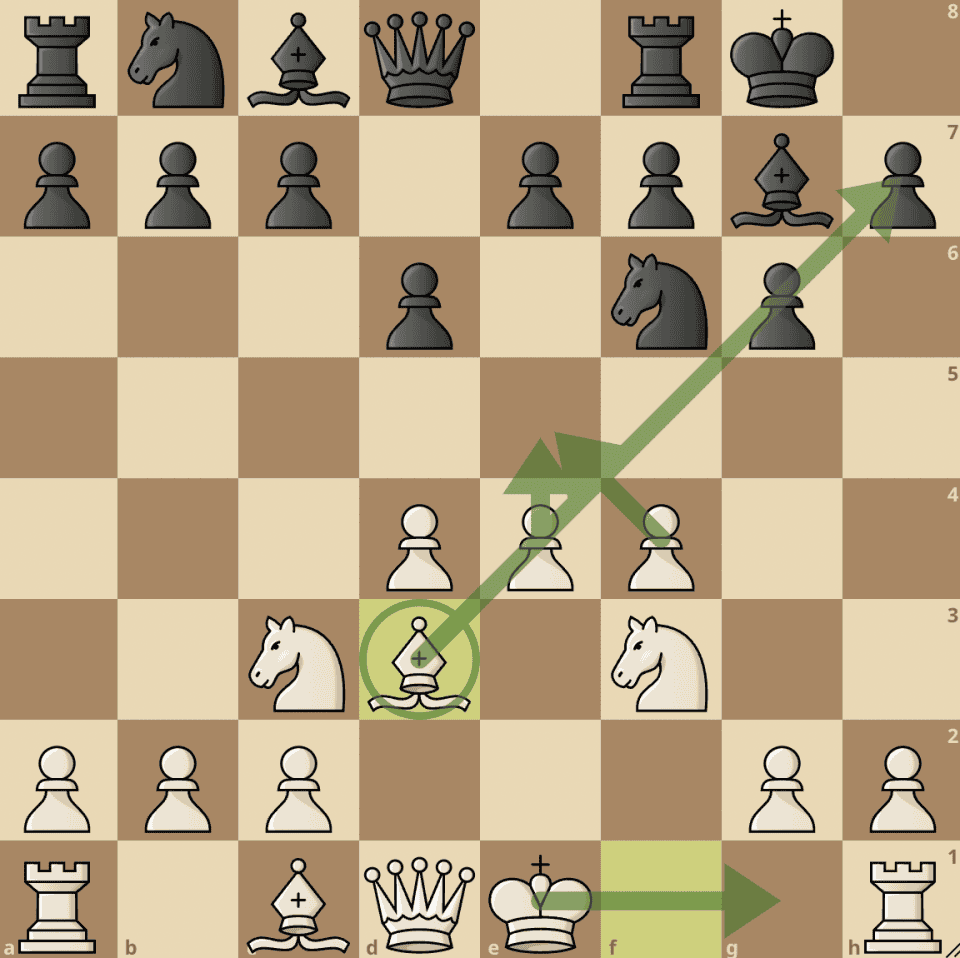

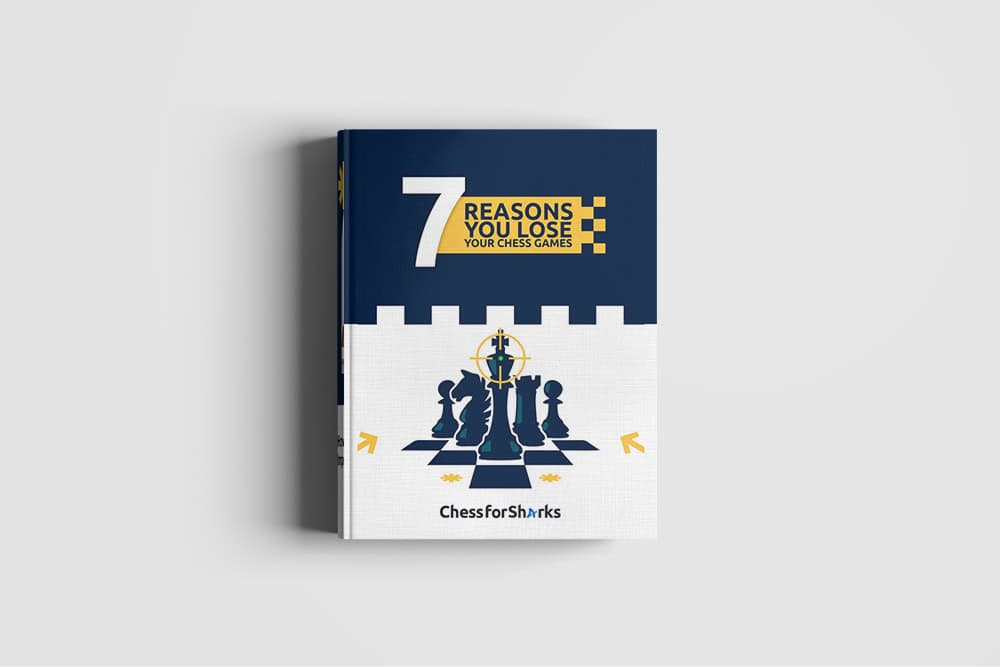
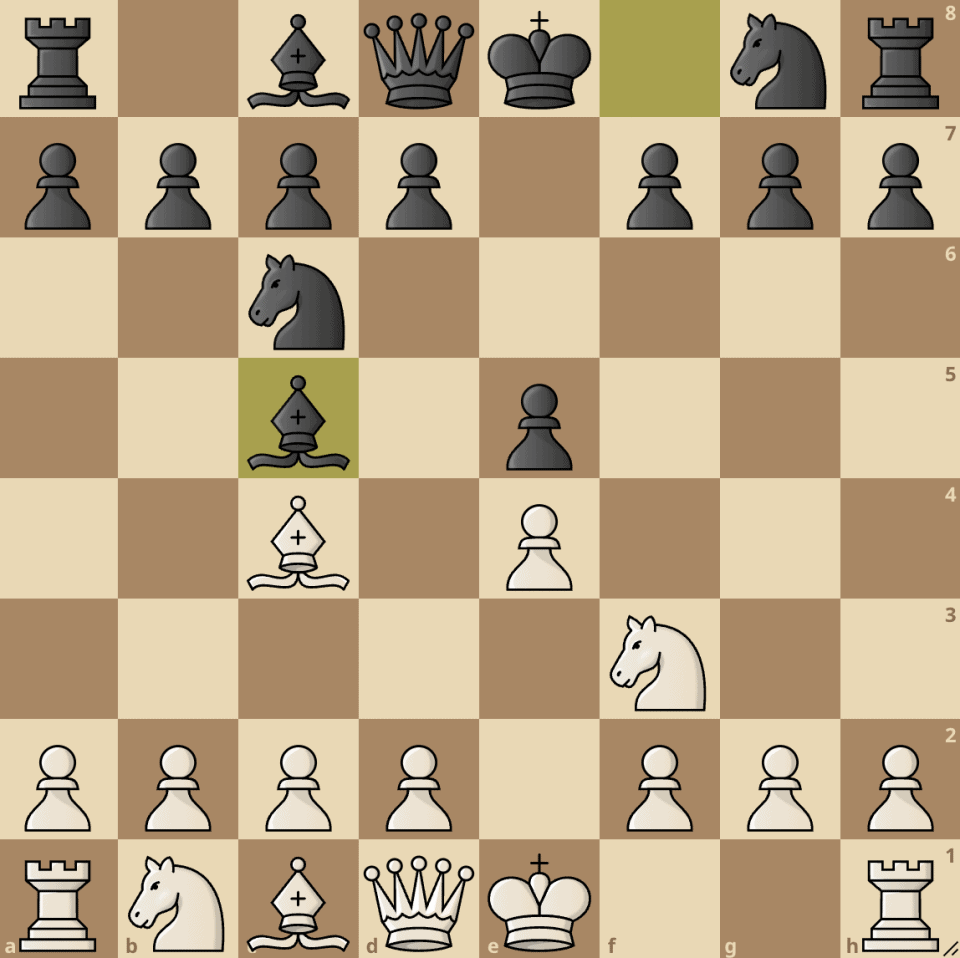
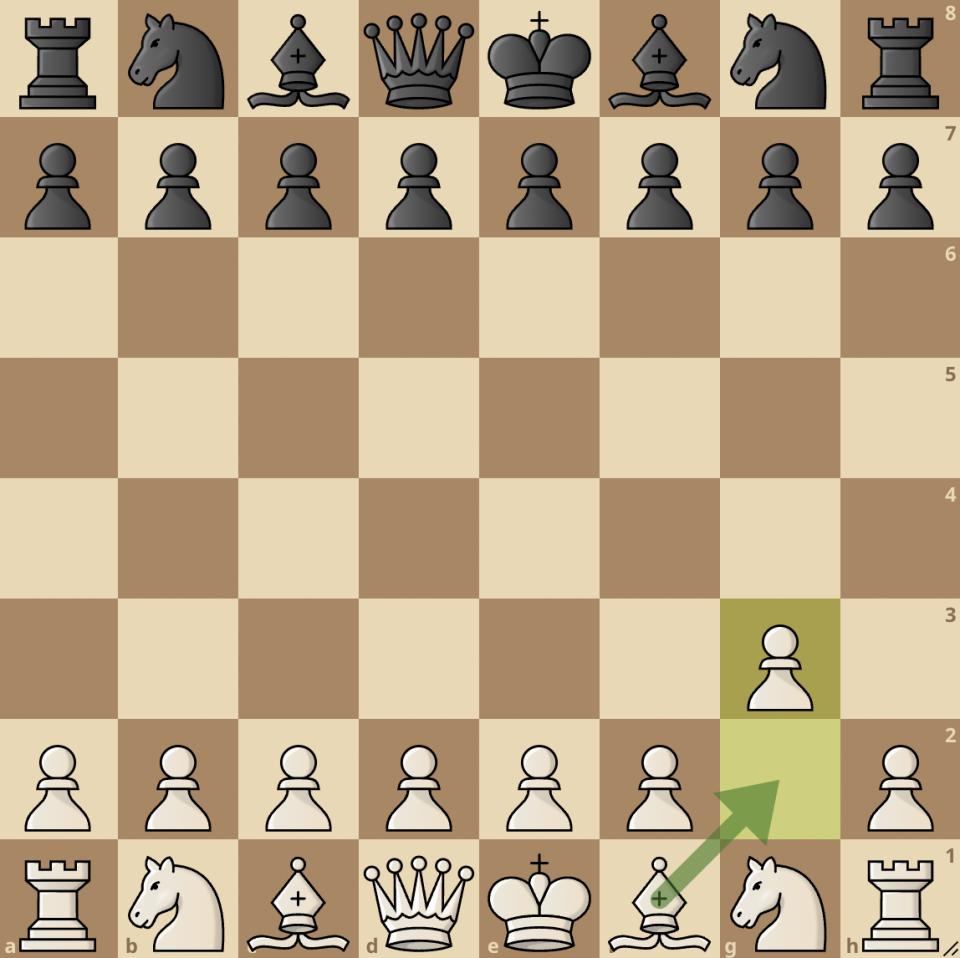
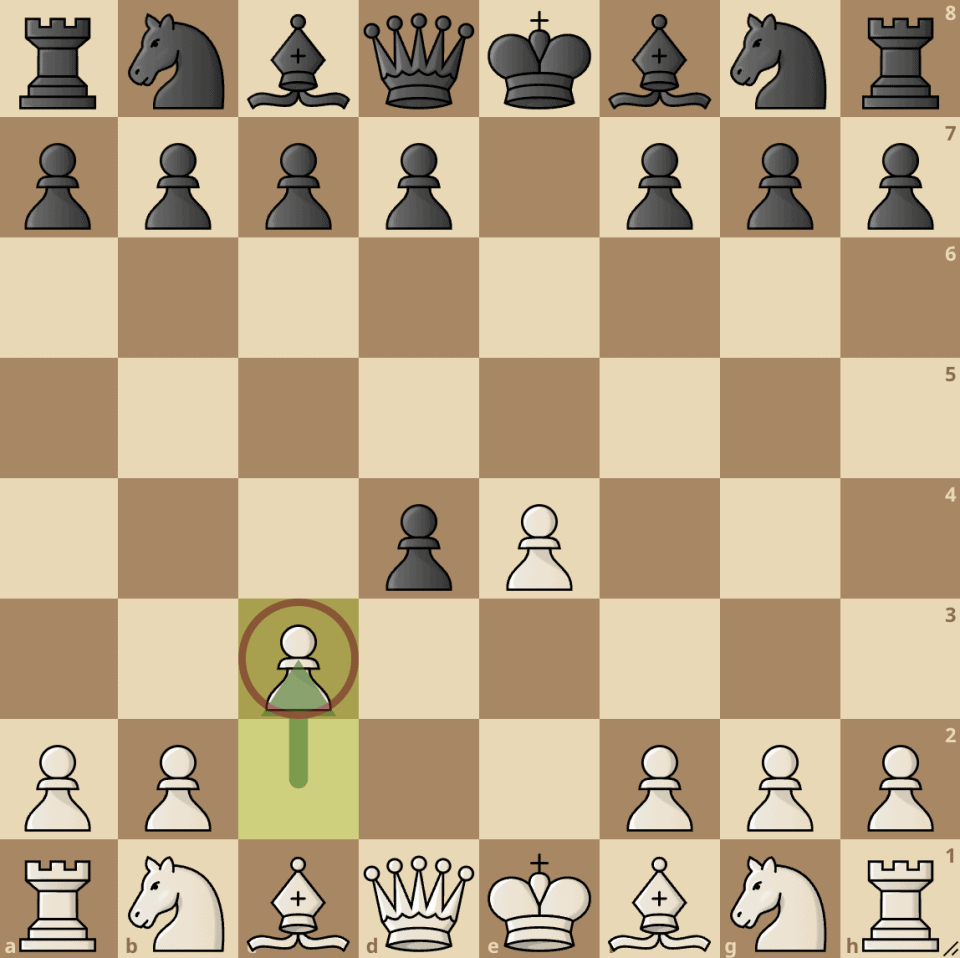
join the conversation